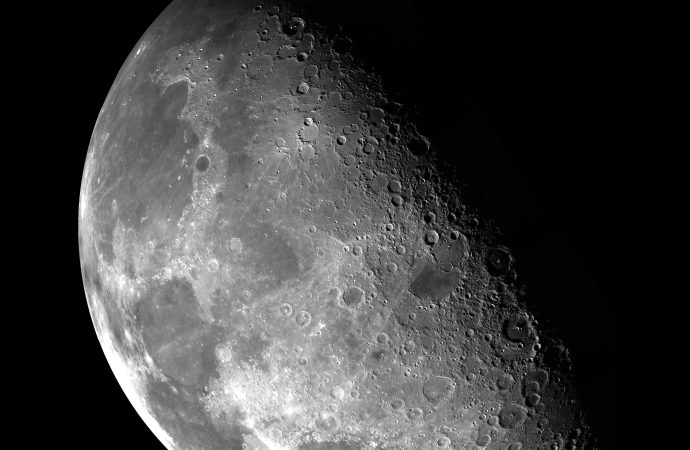Introduction: As Earth’s closest celestial neighbor, the Moon has long fascinated scientists and explorers. Among its many intriguing features, the Moon’s gravity stands out as a captivating subject of study. In this article, we delve into the unique characteristics of lunar gravity, shedding light on its mysteries and exploring its significance for space exploration and
Introduction:
As Earth’s closest celestial neighbor, the Moon has long fascinated scientists and explorers. Among its many intriguing features, the Moon’s gravity stands out as a captivating subject of study. In this article, we delve into the unique characteristics of lunar gravity, shedding light on its mysteries and exploring its significance for space exploration and scientific research.
The Moon’s Influence:
The force of gravity is a fundamental property of any celestial body, shaping its environment and affecting the behavior of objects within its gravitational field. While the Moon’s gravity is considerably weaker than Earth’s, it still exerts a powerful influence on the lunar surface and the surrounding space.
Understanding Lunar Gravity:
Compared to Earth’s gravity of approximately 9.8 meters per second squared (m/s²), the Moon’s gravity is much weaker. With an average acceleration due to gravity of about 1.6 m/s², or roughly one-sixth of Earth’s gravity, objects and astronauts on the lunar surface experience a sense of lightness and ease in their movements.
Measuring Lunar Gravity:
Accurate measurements of lunar gravity have been obtained through various missions, including the Apollo program in the late 1960s and early 1970s. Astronauts conducted experiments, such as dropping objects and measuring their fall, to calculate the acceleration due to gravity on the Moon. These measurements have provided valuable insights into the Moon’s gravitational characteristics.
Impacts on Astronauts and Spacecraft:
The lower gravity on the Moon presents both challenges and opportunities for space exploration. Astronauts experience a reduced weight, allowing for higher jumps and easier movements. However, the altered gravity also requires adjustments in movement and equipment handling. Spacecraft approaching the Moon must consider the gravitational pull when planning trajectories and landing procedures.
Moon’s Role in Planetary Science:
The Moon’s gravity plays a crucial role in our understanding of planetary science. By studying its gravitational effects on objects and space debris, scientists gain insights into the Moon’s internal structure and composition. The distribution of gravitational forces across the lunar surface offers valuable clues about the moon’s history and formation.
The Tidal Influence:
Beyond its impact on the Moon itself, lunar gravity also influences Earth’s tides. The gravitational interaction between Earth and the Moon causes the rise and fall of ocean tides, shaping coastal ecosystems and influencing marine life cycles. The study of lunar gravity’s effect on Earth’s tides has practical applications in fields such as navigation, coastal engineering, and climate research.
Unraveling Lunar Mysteries:
Scientists continue to explore the intricacies of lunar gravity, seeking answers to unanswered questions. For instance, the distribution of mass within the Moon and the presence of subsurface structures can affect gravitational anomalies. Studying these anomalies provides valuable information about the Moon’s internal composition and may offer insights into its geological history.
Future Missions and Lunar Gravity:
Understanding lunar gravity is crucial for planning future space missions, particularly those involving extended stays on the Moon or establishing lunar bases. Scientists and engineers work to develop technologies that optimize mobility and ensure the well-being of astronauts in low-gravity environments. Lunar gravity research contributes to the broader goal of human exploration beyond Earth.
Conclusion:
The Moon’s gravity, with its unique characteristics, continues to captivate researchers and space enthusiasts. Unraveling the secrets of lunar gravity not only expands our understanding of the Moon itself but also contributes to scientific knowledge about planetary bodies and space exploration. As we continue to explore the cosmos, lunar gravity remains a fundamental aspect of our journey, offering valuable insights into the wonders of our celestial neighborhood and beyond.

















Leave a Comment
Your email address will not be published. Required fields are marked with *